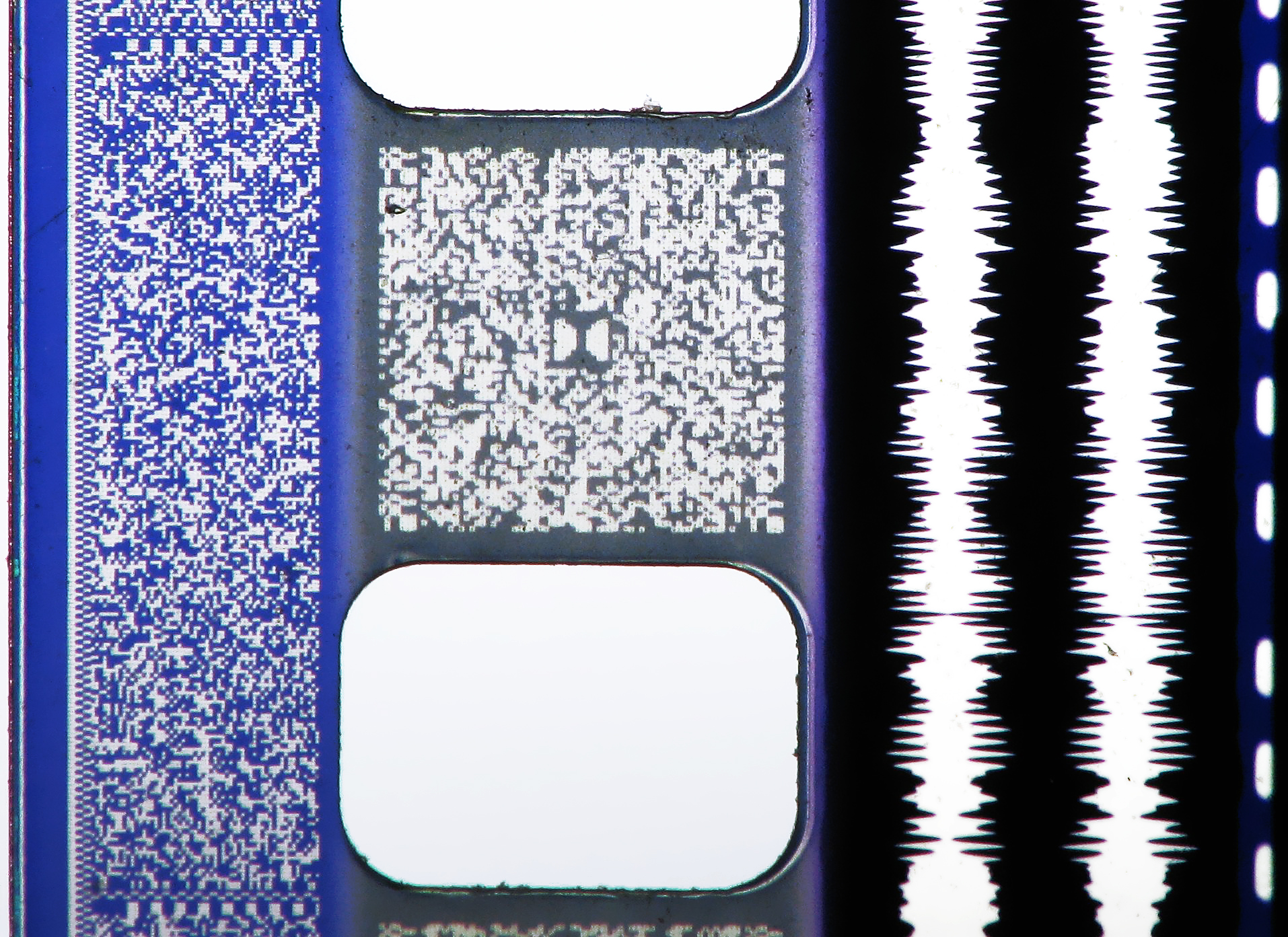|
Optigan
The Optigan (a portmanteau of ''optical organ'') is an electronic keyboard instrument designed for the consumer market. The name stems from the instrument's reliance on pre-recorded optical soundtracks to reproduce sound. Later versions (built under license and aimed at the professional market) were sold under the name Orchestron. Production history Engineering work on the project began in 1968 and the first patents issued in 1970. The Optigan was released in 1971 by Optigan Corporation, a subsidiary of toy manufacturer Mattel, Incorporated of El Segundo, California with the manufacturing plant located nearby in Compton, California. At least one TV commercial from the era is extant, featuring the Optigan demonstrated by actor Carl Betz (best known for his role as the father on ''The Donna Reed Show''). The Optigan was promoted in at least one Sears-Roebuck catalog. All rights to the Optigan, the disc format, and all previous discs were sold in 1973 to Miner Industries of New Yo ... [...More Info...] [...Related Items...] OR: [Wikipedia] [Google] [Baidu] |
Orchestron
The Vako Orchestron is a keyboard instrument made in the 1970s, that produces its sound through electronic amplification of sounds pre-recorded as an optical track on a disc. It is the professional version of the Mattel Optigan, an earlier and lower-priced model intended for amateur musicians. History Vako Synthesizers Incorporated, founded by electronic instrument pioneer and former Moog technician and salesperson David Van Koevering, started to build improved versions of the Optigan under the name Orchestron in 1975. Intended for professional use as an alternative to the Mellotron (hence the name Orchestron), it featured improved recorded sounds over the Optigan. The Optigan was an organ that played its sounds from light-scanned graphic waveforms encoded on film discs. The sounds with the highest fidelity were on the outer rings of these discs, and these outer rings were used for the Orchestron sounds to improve the sound. Although the Model A Orchestron is identical to th ... [...More Info...] [...Related Items...] OR: [Wikipedia] [Google] [Baidu] |
Optical Sound
Optical sound is a means of storing sound recordings on transparent film. Originally developed for military purposes, the technology first saw widespread use in the 1920s as a sound-on-film format for motion pictures. Optical sound eventually superseded all other sound film technologies until the advent of digital sound became the standard in cinema projection booths. Optical sound has also been used for multitrack recording and for creating effects in some musical synthesizers. 1914-1921: Naval and military use Building on the principle first demonstrated by the Photophone of Alexander Graham Bell in 1880, optical sound was developed by several inventors with an interest in wireless communication through transmission of light, primarily for nautical, ship-to-ship use. The idea was that sound pulses could be converted into light pulses, beamed out from one ship and picked up by another, where the light pulses would then be reconverted into sound. A pioneer in this technology ... [...More Info...] [...Related Items...] OR: [Wikipedia] [Google] [Baidu] |
Concentric
In geometry, two or more objects are said to be ''concentric'' when they share the same center. Any pair of (possibly unalike) objects with well-defined centers can be concentric, including circles, spheres, regular polygons, regular polyhedra, parallelograms, cones, conic sections, and quadrics. Geometric objects are '' coaxial'' if they share the same axis (line of symmetry). Geometric objects with a well-defined axis include circles (any line through the center), spheres, cylinders, conic sections, and surfaces of revolution. Concentric objects are often part of the broad category of '' whorled patterns'', which also includes '' spirals'' (a curve which emanates from a point, moving farther away as it revolves around the point). Geometric properties In the Euclidean plane, two circles that are concentric necessarily have different radii from each other.. However, circles in three-dimensional space may be concentric, and have the same radius as each other, but nevert ... [...More Info...] [...Related Items...] OR: [Wikipedia] [Google] [Baidu] |
Optical
Optics is the branch of physics that studies the behaviour and properties of light, including its interactions with matter and the construction of instruments that use or detect it. Optics usually describes the behaviour of visible, ultraviolet, and infrared light. Light is a type of electromagnetic radiation, and other forms of electromagnetic radiation such as X-rays, microwaves, and radio waves exhibit similar properties. Most optical phenomena can be accounted for by using the classical electromagnetic description of light, however complete electromagnetic descriptions of light are often difficult to apply in practice. Practical optics is usually done using simplified models. The most common of these, geometric optics, treats light as a collection of rays that travel in straight lines and bend when they pass through or reflect from surfaces. Physical optics is a more comprehensive model of light, which includes wave effects such as diffraction and interference that can ... [...More Info...] [...Related Items...] OR: [Wikipedia] [Google] [Baidu] |
Analog Signal
An analog signal (American English) or analogue signal (British and Commonwealth English) is any continuous-time signal representing some other quantity, i.e., ''analogous'' to another quantity. For example, in an analog audio signal, the instantaneous signal voltage varies continuously with the pressure of the sound waves. In contrast, a digital signal represents the original time-varying quantity as a sampled sequence of quantized values. Digital sampling imposes some bandwidth and dynamic range constraints on the representation and adds quantization noise. The term ''analog signal'' usually refers to electrical signals; however, mechanical, pneumatic, hydraulic, and other systems may also convey or be considered analog signals. Representation An analog signal uses some property of the medium to convey the signal's information. For example, an aneroid barometer uses rotary position as the signal to convey pressure information. In an electrical signal, the voltage, ... [...More Info...] [...Related Items...] OR: [Wikipedia] [Google] [Baidu] |
Idler-wheel
{{refimprove, date=June 2015 An idler-wheel is a wheel which serves only to transmit rotation from one shaft to another, in applications where it is undesirable to connect them directly. For example, connecting a motor to the platter of a phonograph, or the crankshaft-to-camshaft gear train of an automobile. Because it does no work itself, it is called an " idler". Friction drive An idler-wheel may be used as part of a friction drive mechanism. For example, to connect a metal motor shaft to a metal platter without gear noise, early phonographs used a rubber idler wheel. Likewise, the pinch roller in a magnetic tape transport is a type of idler wheel, which presses against the driven capstan to increase friction. Idler pulley In a belt drive system, idlers are often used to alter the path of the belt, where a direct path would be impractical. Idler pulleys are also often used to press against the ''back'' of a pulley in order to increase the wrap angle (and thus contact ar ... [...More Info...] [...Related Items...] OR: [Wikipedia] [Google] [Baidu] |
Timbre
In music, timbre (), also known as tone color or tone quality (from psychoacoustics), is the perceived sound of a musical note, sound or tone. Timbre distinguishes sounds according to their source, such as choir voices and musical instruments. It also enables listeners to distinguish instruments in the same category (e.g., an oboe and a clarinet, both woodwinds). In simple terms, timbre is what makes a particular musical instrument or human voice have a different sound from another, even when they play or sing the same note. For instance, it is the difference in sound between a guitar and a piano playing the same note at the same volume. Both instruments can sound equally tuned in relation to each other as they play the same note, and while playing at the same amplitude level each instrument will still sound distinctive with its own unique tone color. Musicians distinguish instruments based on their varied timbres, even instruments playing notes at the same pitch and volume ... [...More Info...] [...Related Items...] OR: [Wikipedia] [Google] [Baidu] |
Musical Keyboard
A musical keyboard is the set of adjacent depressible levers or keys on a musical instrument. Keyboards typically contain keys for playing the twelve notes of the Western musical scale, with a combination of larger, longer keys and smaller, shorter keys that repeats at the interval of an octave. Pressing a key on the keyboard makes the instrument produce sounds—either by mechanically striking a string or tine ( acoustic and electric piano, clavichord), plucking a string (harpsichord), causing air to flow through a pipe organ, striking a bell (carillon), or activating an electronic circuit (synthesizer, digital piano, electronic keyboard). Since the most commonly encountered keyboard instrument is the piano, the keyboard layout is often referred to as the piano keyboard or simply piano keys. Description The twelve notes of the Western musical scale are laid out with the lowest note on the left. The longer keys (for the seven "natural" notes of the C major scale: C, D, E, F ... [...More Info...] [...Related Items...] OR: [Wikipedia] [Google] [Baidu] |
Piano
A piano is a keyboard instrument that produces sound when its keys are depressed, activating an Action (music), action mechanism where hammers strike String (music), strings. Modern pianos have a row of 88 black and white keys, tuned to a chromatic scale in equal temperament. A musician who specializes in piano is called a pianist. There are two main types of piano: the #Grand, grand piano and the #Upupright piano. The grand piano offers better sound and more precise key control, making it the preferred choice when space and budget allow. The grand piano is also considered a necessity in venues hosting skilled pianists. The upright piano is more commonly used because of its smaller size and lower cost. When a key is depressed, the strings inside are struck by felt-coated wooden hammers. The vibrations are transmitted through a Bridge (instrument), bridge to a Soundboard (music), soundboard that amplifies the sound by Coupling (physics), coupling the Sound, acoustic energy t ... [...More Info...] [...Related Items...] OR: [Wikipedia] [Google] [Baidu] |
Solo (music)
In music, a solo () is a musical composition, piece or a section (music), section of a piece played or sung featuring a single performer, who may be performing completely alone or supported by an accompanying instrument such as a piano or Organ (music), organ, a Basso continuo, continuo group (in Baroque music), or the rest of a choir, orchestra, band, or other ensemble. Performing a solo is "to solo", and the performer is known as a ''soloist''. The plural is soli or the anglicisation, anglicised form solos. In some contexts these are interchangeable, but ''soli'' tends to be restricted to classical music, and mostly either the solo performers or the solo passage (music), passages in a single piece. Furthermore, the word ''soli'' can be used to refer to a small number of simultaneous parts assigned to single players in an orchestral composition. In the Baroque concerto grosso, the term for such a group of soloists was ''Concertino (group), concertino''. An instrumental solo is ... [...More Info...] [...Related Items...] OR: [Wikipedia] [Google] [Baidu] |





